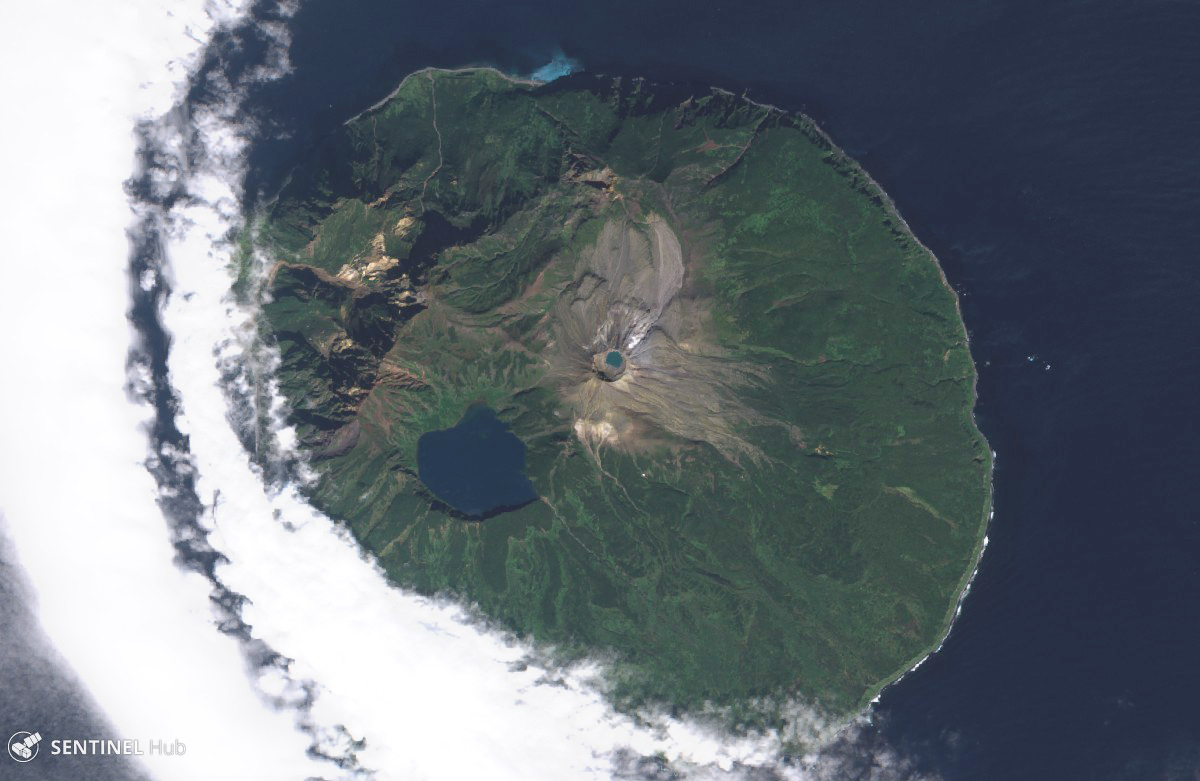Report on Ketoi (Russia) — October 2018
Bulletin of the Global Volcanism Network, vol. 43, no. 10 (October 2018)
Managing Editor: Edward Venzke.
Research and preparation by Sara Arav-Piper.
Ketoi (Russia) Plume of uncertain composition reported based on satellite data one day in September
Please cite this report as:
Global Volcanism Program, 2018. Report on Ketoi (Russia) (Venzke, E., ed.). Bulletin of the Global Volcanism Network, 43:10. Smithsonian Institution. https://doi.org/10.5479/si.GVP.BGVN201810-290200
Ketoi
Russia
47.35°N, 152.475°E; summit elev. 1172 m
All times are local (unless otherwise noted)
Gas-and-steam emissions were previously reported at Ketoi (figure 1) in January, July, and August 2013 (BGVN 40:09). Intense fumarolic activity originating from the same area, the N slope of Pallas Peak, was reported in 1981, 1987, and 1989. Based on a report from the Sakhalin Volcanic Eruption Response Team (SVERT) using Himawari-8 imagery, the Tokyo VAAC reported an ash plume on 21 September 2018 which drifted to the NE; however, evidence of the plume could not be confirmed by the VAAC from satellite imagery. The original VONA (Volcano Observatory Notice for Aviation) issued by SVERT noted a volcanic cloud without a specific mention of ash, but also remarked that thermal anomalies had been observed on 17 and 20 September.
Geological Summary. The circular 10-km-wide Ketoi island, which rises across the 19-km-wide Diana Strait from Simushir Island, hosts of one of the most complex volcanic structures of the Kuril Islands. The rim of a 5-km-wide Pleistocene caldera is exposed only on the NE side. A younger stratovolcano forming the NW part of the island is cut by a horst-and-graben structure containing two solfatara fields. A 1.5-km-wide freshwater lake fills an explosion crater in the center of the island. Pallas Peak, a large andesitic cone in the NE part of the caldera, is truncated by a 550-m-wide crater containing a brilliantly colored turquoise crater lake. Lava flows from Pallas Peak overtop the caldera rim and descend nearly 5 km to the SE coast. The first historical eruption of Pallas Peak, during 1843-46, was its largest.
Information Contacts: Sakhalin Volcanic Eruption Response Team (SVERT), Institute of Marine Geology and Geophysics, Far Eastern Branch, Russian Academy of Science, Nauki st., 1B, Yuzhno-Sakhalinsk, Russia, 693022 (URL: http://www.imgg.ru/en/, http://www.imgg.ru/ru/svert/reports); Sentinel Hub Playground (URL: https://www.sentinel-hub.com/explore/sentinel-playground).


